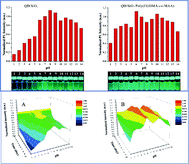For the application of biological quantitative probes, how to ameliorate chemical sensitivity and instability of quantum dots (QDs) under different environments is a longstanding issue. Here, silica and poly(EGDMA-co-MAA) as inert materials, ultrastable QD/SiO2/poly(EGDMA-co-MAA) fluorescent nanoprobes with a tri-layer core–shell structure were successfully prepared by distillation precipitation polymerization. The QD/SiO2/poly(EGDMA-co-MAA) demonstrated ultra-high chemical stability due to the synergistic combination of silica and cross-linked polymer stabilizing the fluorescence intensity of QDs under harsh chemical environments, including strong acidic solutions, which is unavailable for any of the current encapsulation technologies used alone. Immunochromatography test strips (ICTS) for the detection of human chorionic gonadotrophin (HCG) antigen was developed by using QD/SiO2/poly(EGDMA-co-MAA) as fluorescent nanoprobes. The results showed admirable reliability and sensitivity in antigen detection. What's more, reliable quantitative detection based on QD/SiO2/poly(EGDMA-co-MAA) was realized. We expect the ultrastable QDs will open up exciting opportunities in accurate quantitative analysis and imaging.

You have access to this article
 Please wait while we load your content...
Something went wrong. Try again?
Please wait while we load your content...
Something went wrong. Try again?


 Please wait while we load your content...
Please wait while we load your content...